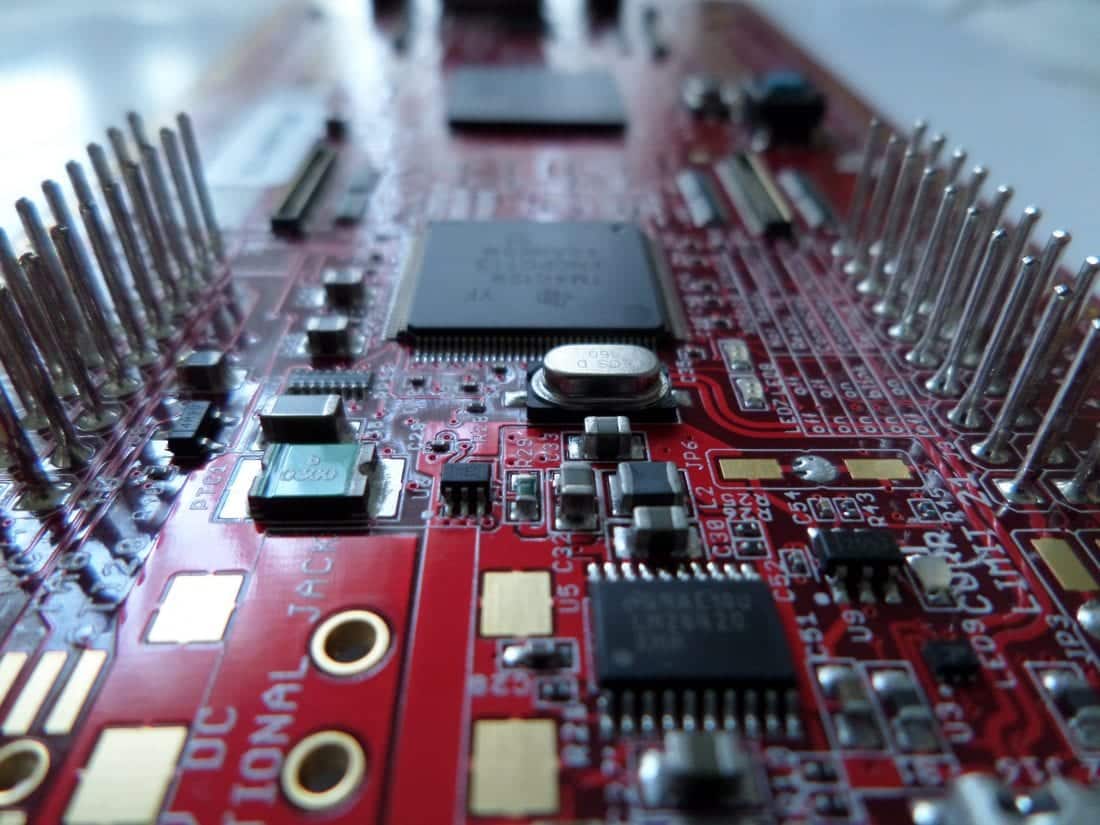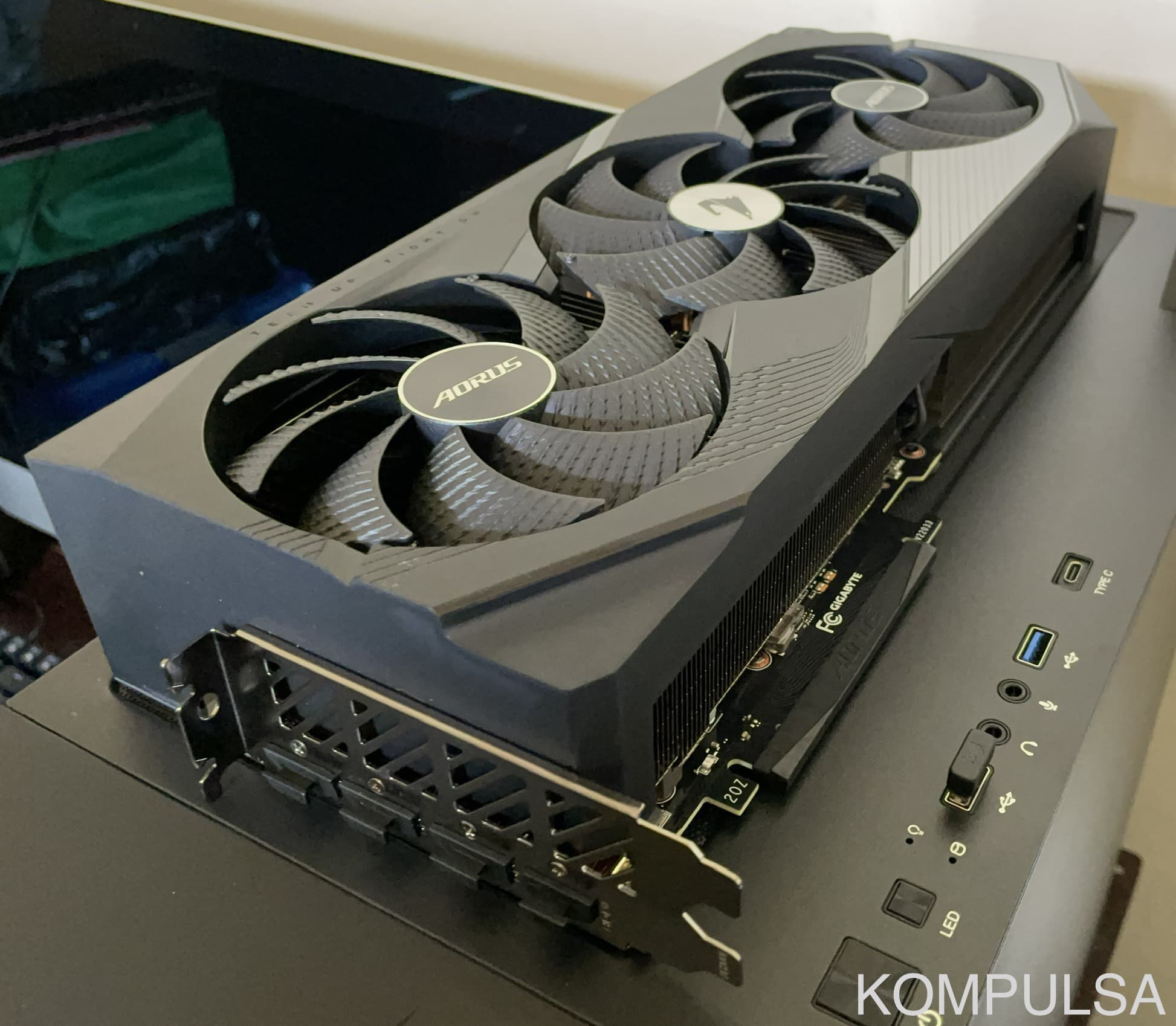The use of acronyms is common in the electrical engineering industry to describe many different electronic parts, phenomenons, and metrics. This page contains electronics acronyms and their meanings.

Image credit: Kompulsa.
- A: Ampere. — A unit of electric current.
- AC: Alternating Current — Electric current that reverses direction periodically.
- AM: Amplitude Modulation.
- AMOLED: Active Matrix Organic LED. A display technology commonly used in phones.
- AGM: Absorbed Glass Mat — This is a form of lead-acid battery.
- ATA: Advanced Technology Attachment. A family of interfaces for connecting computer drives.
- AWG: American Wire Gauge. A measure of wire thickness.
- ALU: Arithmetic Logic Unit.
- APU: Accelerated Processing Unit. A type of processor used in some computers (usually AMD).
- ADC: Analog-To-Digital Converter. ADCs convert analog signals to digital. Needed for software to process or store analog sensor data.
- BAW (resonator): Bulk Acoustic Wave. An alternative to crystal oscillators for clocking.
- BJT: Bipolar Junction Transistor (Bipolar transistor). Common examples: 2n3055 or TIP122.
- BLDC: Brushless Direct Current motor (Brushless DC electric motor).
- BGA: Ball Grid Array. A type of case used when manufacturing integrated circuits.
- C: Capacitor.
- CAN: Controller Area Network. Some microcontrollers use this (often called a CAN bus) to communicate with each other.
- CCD: Charge-Coupled Device.
- CMOS: Complementary Metal-Oxide Semiconductor.
- CPU: Central Processing Unit.
- CRT: Cathode-Ray Tube: The device that powers CRT monitors, TVs, and oscilloscopes.
- DAC: Digital-To-Analog Converter. DAC’s convert digital signals (1s and 0s, so limited to only two states) into analog waveforms (which have more than two states).
- DDR: Double Data Rate.
- DIP: Dual-Inline Package — A specification defining how an integrated circuit’s casing is built/shaped.
- DPDT: Double-Pole Double-Throw. A type of switch (often used in relays and circuit breakers).
- DMA: Direct Memory Access.
- DMM: Digital Multimeter.
- DRAM: Dynamic Random Access Memory.
- DSP: Digital Signal Processor.
- DTL: Diode-Transistor Logic.
- DVI: Digital Visual Interface.
- ECU: Engine Control Unit.
- ECM (electrical): Electronically Commutated Motor, otherwise known as a brushless DC motor.
- ECM (automotive): Engine Control Module (same thing as an ECU).
- EPROM: Erasable Programmable Read-Only Memory.
- EEPROM: Electrically Erasable Programmable Read-only Memory.
- EMAC: Ethernet Media Access Control.
- EMF: Electromotive Force. Another term for voltage.
- EMI: Electromagnetic Interference.
- ESD: Electrostatic Discharge.
- FET: Field-Effect Transistor.
- FLA: Full Load Amperage — How much current an electric motor draws under a full load.
- FM: Frequency Modulation.
- FPGA: Field-Programmable Gate Array.
- GDS: Gas-discharge Tube.
- GND: Ground.
- GPIO: General-Purpose Input/Output.
- GPS: Global Positioning System.
- GPU: Graphics Processing Unit.
- HAL: Hardware Abstraction Layer.
- HDD: Hard Disk Drive.
- HDMI: High-Definition Multimedia Interface.
- IC: Integrated Circuit.
- IGBT: Insulated-Gate Bipolar Transistor.
- ISA: Instruction Set Architecture.
- JFET: Junction Field-Effect Transistor.
- KVA: Kilovolt Amperes.
- L: Inductor.
- LCD: Liquid Crystal Display.
- LED: Light-Emitting Diode.
- LiCoO2: Lithium Cobalt Oxide. A battery chemistry used to power some laptops.
- LiFePO4: Lithium-iron Phosphate. A battery chemistry used to power electric vehicles.
- LiPo: Lithium Polymer. A battery chemistry commonly used to power high-end smartphones due to its high energy density.
- LPF: Low-pass Filter. A filter that allows signals below a certain frequency to pass through, but blocks higher frequency signals.
- LRA: Locked Rotor Amperage — The amount of current drawn by an electric motor if its rotor is jammed.
- MDAC: Multiplying Digital-To-Analog Converter.
- MCU: Microcontroller Unit (common examples: Arduino Uno or Texas Instruments MSP430).
- MMU: Memory Management Unit.
- MOSFET: Metal-Oxide-Semiconductor Field-Effect Transistor.
- MOV: Metal-Oxide Varistor. A resistor used to automatically inhibit overvoltage and surges.
- MUX: Multiplexer.
- NiCd: Nickel-Cadmium. A battery chemistry that used to power laptops, CD players, and other small electronics.
- NiMH: Nickel-Metal Hydride. A battery chemistry that used to be common in hybrid cars and cordless phones.
- NMR: Nuclear Magnetic Resonance.
- NTC: Negative-Temperature Coefficient.
- NVM: Non-volatile Memory.
- NVMe: NVM Express.
- NVRAM: Non-Volatile RAM.
- OLED: Organic LED. A film of organic material that generates light when electrified.
- Op-amp: Operational amplifier.
- PATA: Parallel ATA. An interface used by computer hard drives (among other types of drives) in the 80s, 90s, and early 2000s.
- PCB: Printed Circuit Board.
- PCI: Peripheral Component Interconnect. A bus used to connect peripherals to a computer motherboard (eg. video card).
- PCIe: PCI Express.
- PLC: Programmable Logic Controller. A computer (more of a controller) designed for use in industrial environments.
- PLCC: Plastic Leaded Chip Carrier.
- PROM: Programmable Read-only Memory.
- PSU: Power Supply Unit. Commonly used to refer to the AC To DC power supply found in PCs.
- PTC: Positive Temperature Coefficient. Sometimes used to refer to resistors that increase resistance with temperature to inhibit overvoltage and power surges.
- PWM: Pulse-Width Modulation.
- RAM: Random Access Memory.
- ROM: Read-only Memory.
- RISC: Reduced Instruction Set Computer.
- RTC: Real-time Clock. A clock used for timers in computers and microcontrollers.
- RTL: Resistor-Transistor Logic.
- SATA: Serial ATA. An interface used by computer drives, starting from the early 2000s.
- SBC: Single-Board Computer (common examples: Raspberry Pi and Beaglebone Black).
- SCSI: Small Computer System Interface.
- SLA: Sealed Lead Acid. The sealed variety of lead-acid batteries.
- SPST: Single-Pole Single-Throw. A type of switch or relay.
- SRAM: Static Random Access Memory — An extremely fast type of memory used for caching.
- SSD: Solid-State Drive. A data storage medium with no moving parts.
- TCU: Transmission Control Unit. This device controls the behaviour of automatic vehicle transmissions.
- TCM: Transmission Control Module.
- USB: Universal Serial Bus.
- VRLA: Valve Regulated Lead-Acid (battery).




